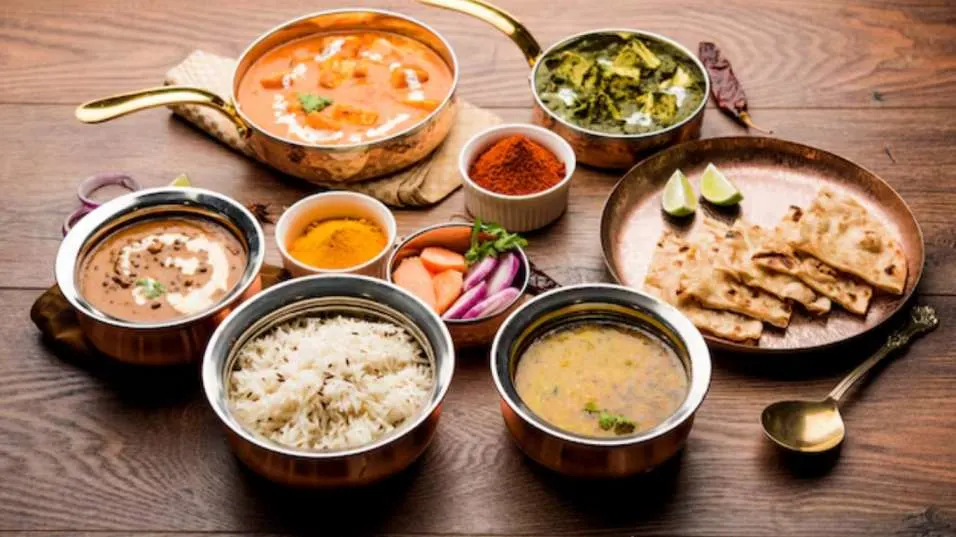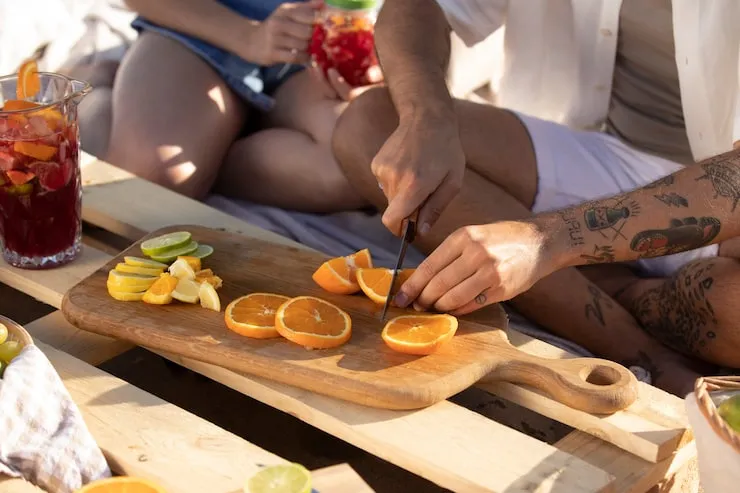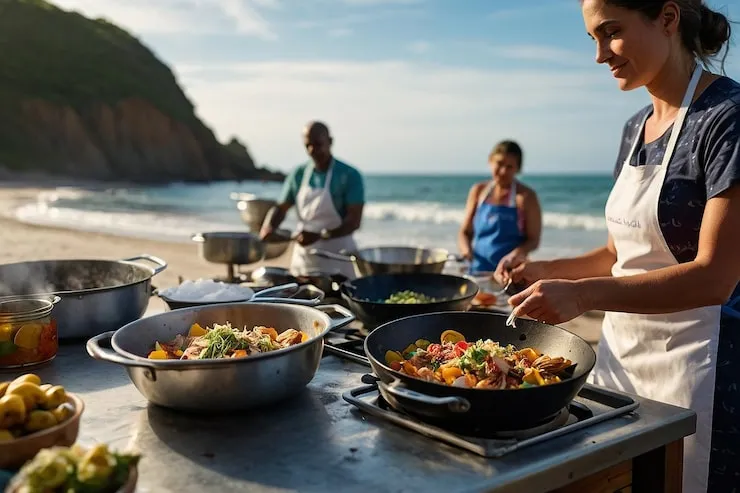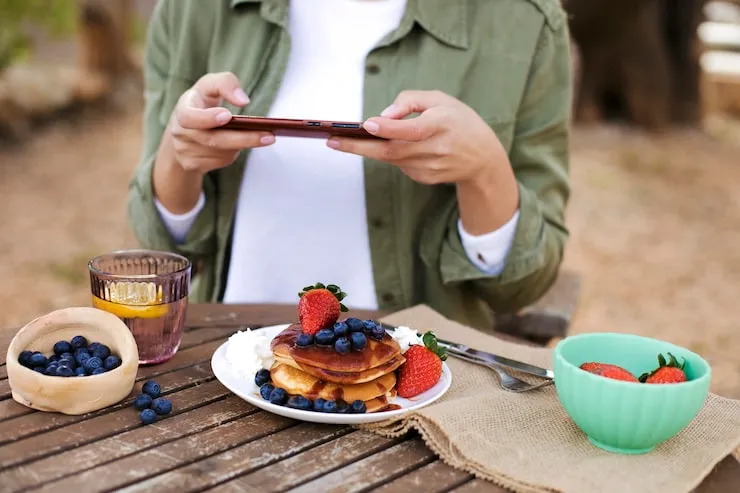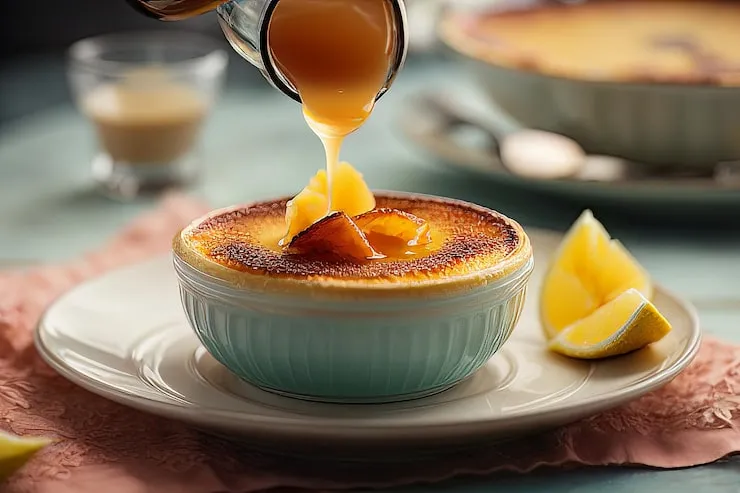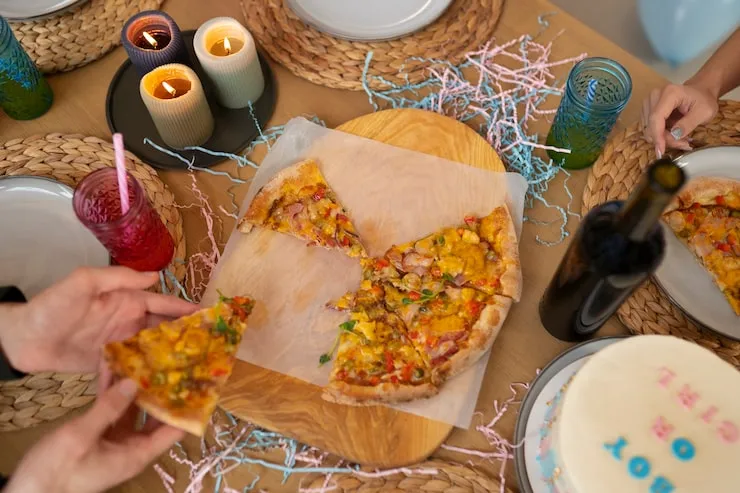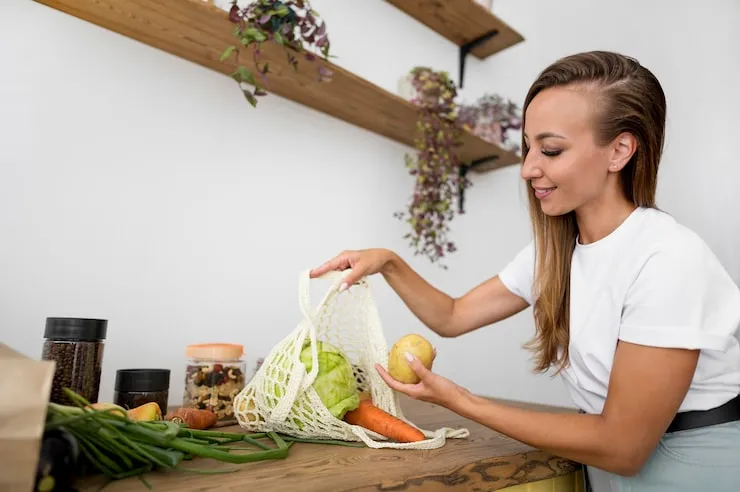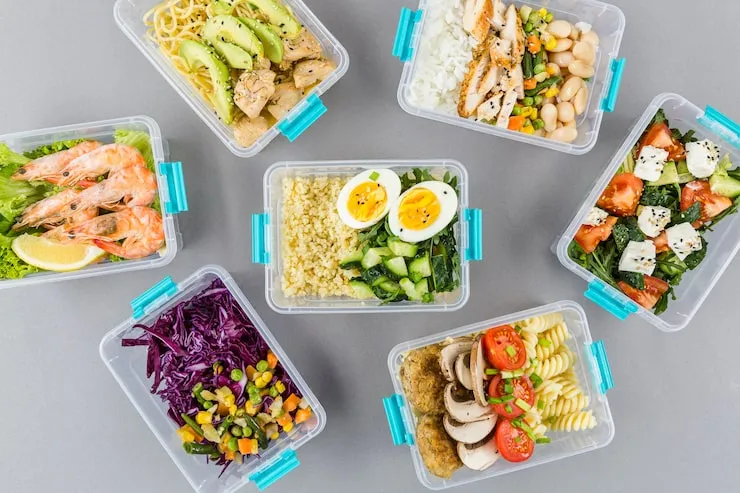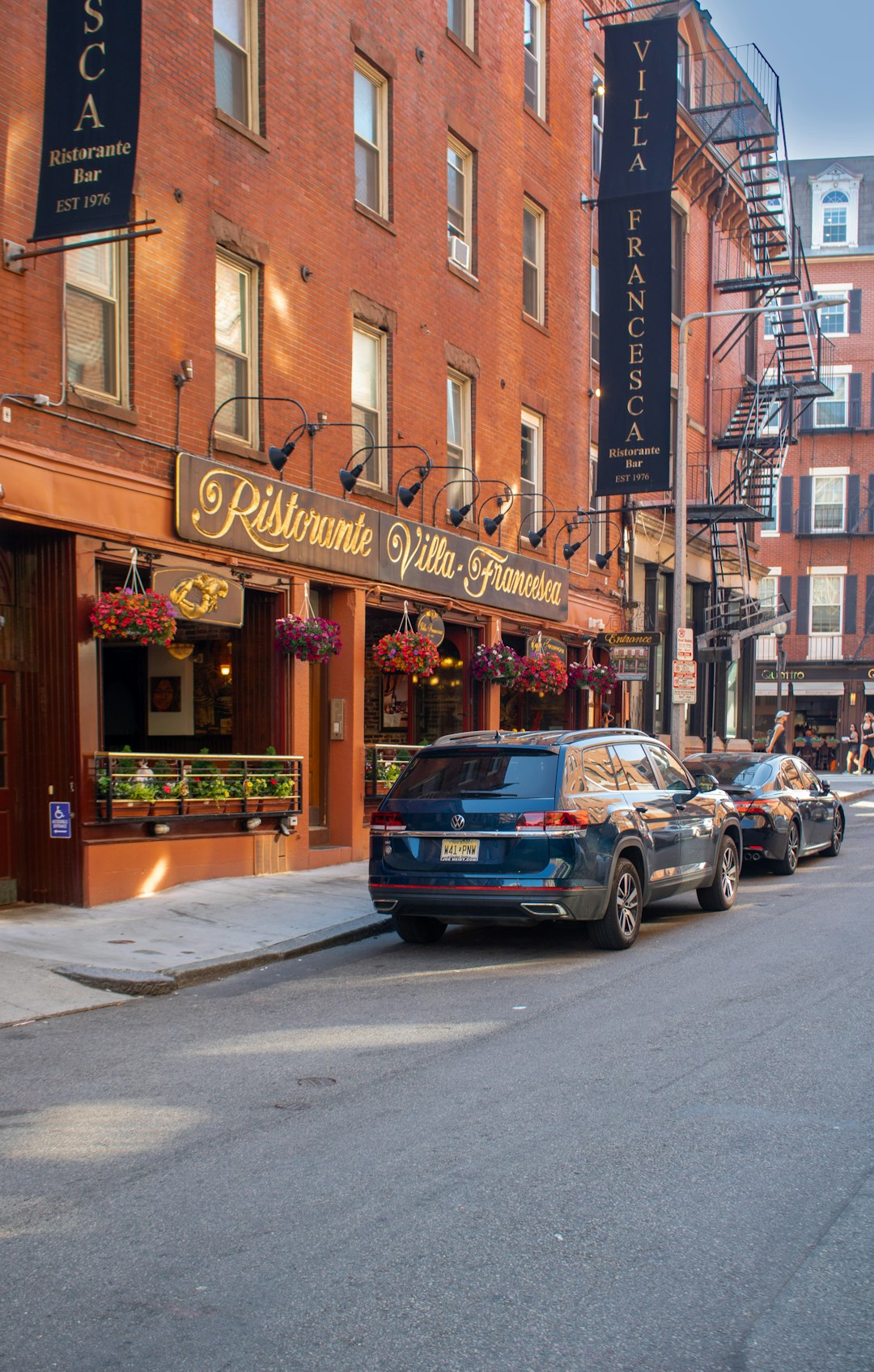There’s a kind of food that doesn’t come from five-star hotels or cookbooks. It doesn’t need presentation or garnish. It just sits there on a plate, warm and honest. The kind that tells stories.
In many Kerala homes, long before restaurant menus and microwave dinners took over, meals were made from the land — whatever was pulled from the garden, plucked from the trees, or caught from the waters nearby. And the food? It was simple. Sometimes even rough. But it had soul.
Rediscovering Kerala’s Ancient Food Jewels takes us to those overlooked flavors — you might not discover these on each table nowadays, but they once ruled the kitchen: Kappa, angle curry, a dish called Puzhukku, and the classic buttermilk drink Mor. Let’s walk back to those times.
Boiled Roots That Fed Many: Kappa
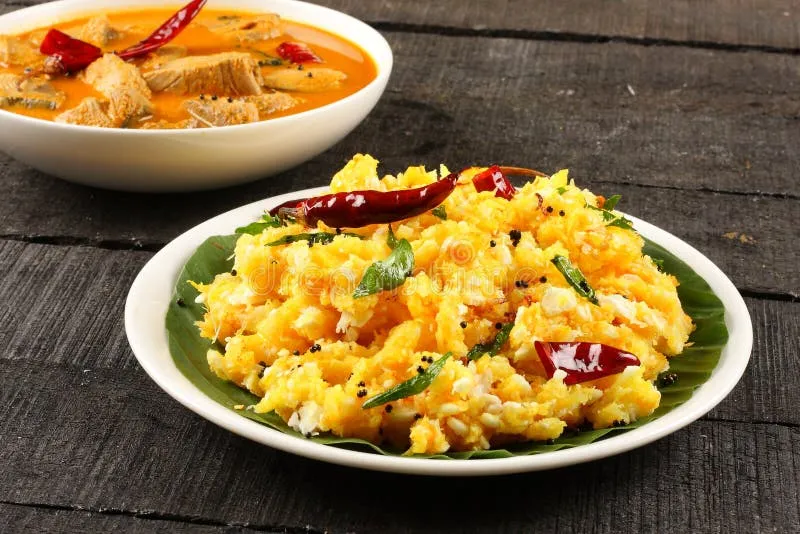
Tapioca — or Kappa as everyone in Kerala calls it — doesn’t look like much. Just thick, pale root pieces once peeled. But for decades, this was survival Keral Ancient Food. After hard field work, it filled stomachs without draining the wallet. Families didn’t buy it. They grew it. It was right there, in the corner of the backyard, pushing through red soil.
Once harvested, it got peeled, chopped into large bits, and boiled until soft. No pressure cooker, just patience. No heavy spice either — maybe a bit of coconut oil drizzled, a few curry leaves, some salt. It wasn’t a meal until something sharp joined in. That’s where the bold, red curry came in.
Read Also: Lost Recipes of Kerala: Savoring Rare Ancient Dishes Like Ada Pradhaman and Thoran
The Fish That Brought Fire to the Table
Kerala’s coastal soul shows best in its fish preparations. There’s one — just called “fish curry” by most — that hits hard and fast. No cream, no onions, nothing rich or sweet. Just raw heat, acidity, and deep flavor.
What gave it that kick?
A dark, dried fruit called kudampuli. It made the whole curry sharp and smoky. Sardines or mackerel swam in it, absorbing all the spice. Some cooked it in mud pots, and many still do. That pot gave it a taste you just can’t get from steel.
This curry wasn’t meant to be eaten right after cooking. The next day, after it had cooled and sat, that’s when it got real. People say it tastes better after it rests. They’re right.
And when you scoop it up with boiled Kappa? That’s comfort.
When Nothing Fancy Was Needed: Puzhukku
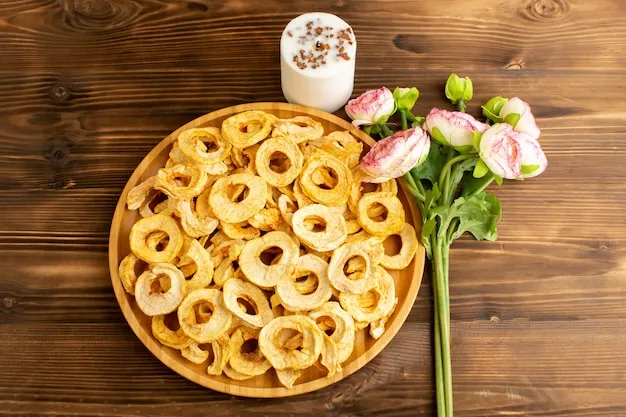
In Kerala’s villages, especially during monsoon or when the rice ran out, people turned to what they had. That’s how Puzhukku came into life. The word just means “boiled and mashed,” but each family made it their own way.
Some used yam. Others tossed in green lentils, banana, or pieces of jackfruit seeds. Boil. Mash. Mix with coconut, green chili, maybe cumin. It wasn’t spicy or oily. However, it left you feeling light and filled you up.
One variation — made with unripe jackfruit — came during the fruit’s season. A bit sweet, fibrous, and earthy. Some added a dash of jaggery. Kids loved it.
Puzhukku didn’t pretend to impress. It was food that stayed close to the land.
Buttermilk with a Bite: Mor
After the fire of fish curry or the heaviness of boiled roots, came the cool-down. Kerala's spicy buttermilk, known as mor, was more than simply a beverage.. It was medicine in a glass. A way to settle the stomach and the mind.
This wasn’t sweet. It wasn’t thick either. Made by thinning curd with water, then stirred with bits of crushed ginger, curry leaves, green chili, and a pinch of turmeric. Some added tiny shallots too. Served cold, it could cut through any summer sweat.
Workers in the fields drank it. So did children after meals. It wasn’t a choice — it was part of the rhythm. And on festival days, a thicker version called Kaalan took its place in the feast.
But daily? Mor was the gentle full stop to every lunch.
From Backyards to Instagram?

For a while, all of this nearly faded. People in cities started picking up food that came in packets. Instant masalas. Bread. Fried snacks. Rice got fancier. Tapioca became “village food.” Some said these old dishes were boring. Poor man’s food.
But something shifted in the last few years.
Suddenly, restaurants in Kochi began offering Kappa-Meen as a "combo." Wellness coaches on YouTube started talking about Mor as a probiotic wonder. Jackfruit Puzhukku found its way into vegan blogs. Fish curries started appearing in “authentic Kerala thali” photos online.
It’s strange. The same meals that once went unnoticed are now “traditional treasures.” But it’s not just fashion. People are tired of eating from boxes. They’re craving something slower, deeper.
Not Just Tasty. These Meals Meant Something
Cooking these foods wasn’t a job. It was part of living. You cooked what you had. You used your hands. You tasted and adjusted. There wasn’t a printed recipe on the wall — just instinct and memory.
More than that, they brought people together. Siblings eating Kappa under a tree. Mothers cooling Mor for their kids in the heat. Fish curry bubbling in the corner while grandparents waited for it to thicken.
You don’t get that with frozen pizza.
Bringing Them Back to the Plate
You don’t need to live in Kerala to try these again. The ingredients aren’t rare. Most are in your kitchen already.
- Boil a root.
- Mash a few veggies with grated coconut.
- Stir some curd with curry leaves.
- Make that fish curry — even if you don’t have kudampuli, tamarind will do for a start.
And don’t worry if it doesn’t turn out like your grandmother’s. Food like this doesn’t punish mistakes. In fact, it gets better the more you mess with it.
Conclusion
In the end, these dishes aren’t famous. They don’t come with brand names or masterchef titles. But they stayed alive through generations — whispered from one kitchen to the next. Because they work. For the body, for the heart.
Kappa. Fish curry. Puzhukku. Mor. They’re not just meals. They’re time machines in your mouth. They remind you of who you were, where you came from, and how something so basic could still be beautiful



